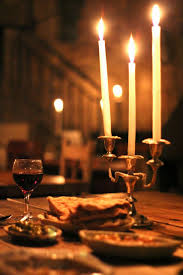It could be true: researchers at Northwestern U niversity have learned that insulin was unable to quickly bring glucose levels back to a normal level following a meal with bright light exposure in the evening. Yes, that does matter, because the body’s inability to adequately move glucose out of the bloodstream, can, over time, help put the pounds on. A Northwestern new release reports that previous research by Northwestern scientists showed that people who received the majority of their bright light in the morning weighed less than those who were exposed to most of their bright light after 12 p.m. Mouse studies also have shown that mice kept in constant light have altered glucose metabolism and gain weight compared to control mice. In this case, the researchers set out to examine the effects of three hours of morning or evening blue-enriched light exposure compared to dim light on hunger, metabolic function and physiological arousal. To do that, they subjected 19 healthy adults to three hours of blue-enriched light exposure starting either 0.5 hours after waking (morning group) or 10.5 hours after waking (evening group).  The morning group ate breakfast in the light; the evening group ate dinner in the light. Ready? The envelope please…the study showed that blue-enriched light exposure acutely altered metabolic function in both the morning and the evening compared to dim light. While morning and evening blue-enriched light exposure both resulted in higher insulin resistance, evening blue-enriched light led to higher peak glucose. The bottom line: the researchers are convinced that our bodies have a harder time compensating for the increase in glucose in the evening.
niversity have learned that insulin was unable to quickly bring glucose levels back to a normal level following a meal with bright light exposure in the evening. Yes, that does matter, because the body’s inability to adequately move glucose out of the bloodstream, can, over time, help put the pounds on. A Northwestern new release reports that previous research by Northwestern scientists showed that people who received the majority of their bright light in the morning weighed less than those who were exposed to most of their bright light after 12 p.m. Mouse studies also have shown that mice kept in constant light have altered glucose metabolism and gain weight compared to control mice. In this case, the researchers set out to examine the effects of three hours of morning or evening blue-enriched light exposure compared to dim light on hunger, metabolic function and physiological arousal. To do that, they subjected 19 healthy adults to three hours of blue-enriched light exposure starting either 0.5 hours after waking (morning group) or 10.5 hours after waking (evening group).  The morning group ate breakfast in the light; the evening group ate dinner in the light. Ready? The envelope please…the study showed that blue-enriched light exposure acutely altered metabolic function in both the morning and the evening compared to dim light. While morning and evening blue-enriched light exposure both resulted in higher insulin resistance, evening blue-enriched light led to higher peak glucose. The bottom line: the researchers are convinced that our bodies have a harder time compensating for the increase in glucose in the evening.
